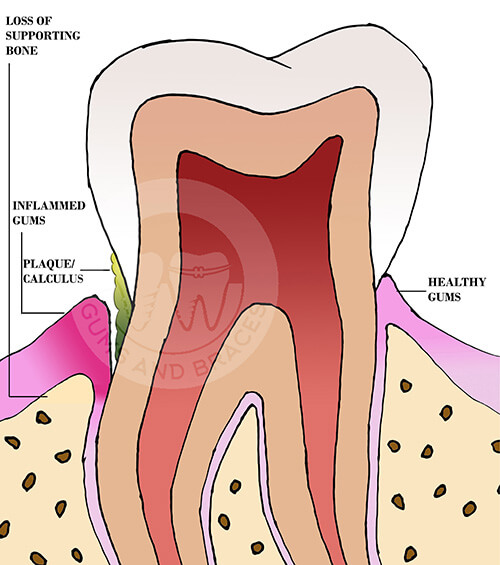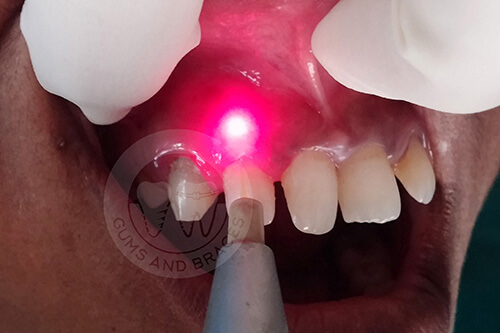Gum disease essentially starts due to improper or insufficient cleaning of teeth. When plaque, tartar (calculus) and other deposits remain on the teeth for longer periods of time, it leads to gum disease. Bleeding gums are the first and most common sign (Gingivitis). Untreated, the gum and bone support around the teeth is gradually reduced and this eventually leads to loosening of teeth. In medical terms, this is called Periodontitis.

Progression of Periodontal Disease
Pyorrhoea / Periodontitis:
Swollen gums, pain in gums and deep under the teeth, bad breath, bleeding gums, loose teeth are all some of the signs of gum disease. The first and mandatory step of treatment is scaling (cleaning of teeth and gums). This is the non-surgical management of gum disease.
In severe gum disease, the patient may need to undergo a treatment called “Open Flap Debridement”. It is done under local anaesthesia and involves a deep cleaning and disinfection of the deep areas of the teeth, gums and alveolar bone. In many cases, when the bone is lost or reduced due to this bacterial overload, procedures to help increase the bone artificially, may need to be done, i.e. bone grafting. This is the conventional method of treatment.
Treatment for periodontitis may also be done by Lasers in certain cases. This has the advantage of being relatively painless and less invasive.

Laser-assisted New Attachment Procedure (LANAP)
Gum Recession:
There are multiple treatment options to increase the height of gums, in cases where the gum recedes or moves away from the tooth, exposing the sensitive and yellowish part of the tooth.

Smile Design / Aesthetic treatments:
A smile can only look so good with unhealthy and shapeless gums! Many patients require recontouring or reshaping of the gums, to improve aesthetics, as well as function. These are generally single visit treatments, with less chair time and vastly noticeable results.
Abscess (pus filled swelling) Treatment:
Experiencing a dental abscess is a pain only those who have gone through it can explain! A painful localised swelling and collection of pus, this treatment generally involves removing the infection immediately. We consider an abscess drainage an emergency treatment.


